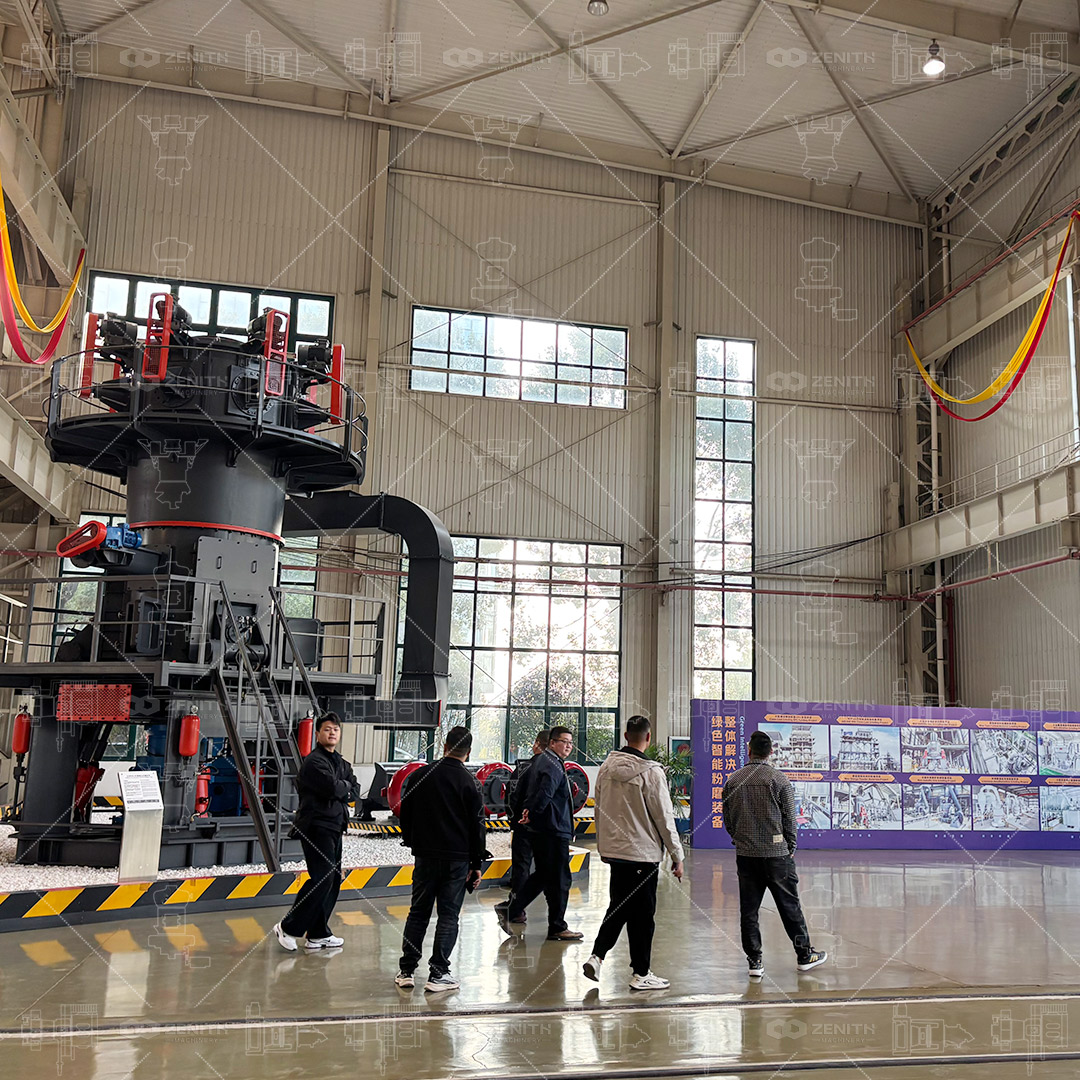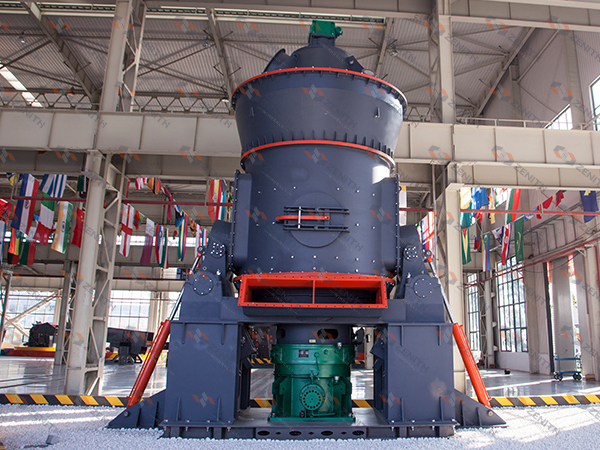Working principle and applicable material range of lum ultrafine vertical mill
2025-11-25 18:57:02
In the realm of industrial powder processing, the demand for ultrafine powders with precise particle size distribution and high purity continues to grow across various sectors. Addressing this need, the LUM Ultrafine Vertical Mill emerges as a sophisticated solution, representing a significant leap in grinding technology. This equipment combines years of engineering expertise with advanced international technologies to deliver exceptional performance in medium to high-end processing applications.
As a professional in the field of industrial machinery, I've observed how the LUM series has revolutionized ultrafine grinding operations. The mill integrates multiple functions—grinding, separation, and transportation—into a single, streamlined system. This integrated approach not only enhances operational efficiency but also reduces the footprint required for installation, making it an ideal choice for facilities with space constraints.
_1764068222479.jpg)
Technical Innovation and Design Philosophy
The development of the LUM Ultrafine Vertical Mill represents a convergence of global technological advancements. Our engineering team has incorporated Taiwan's renowned grinding roller technology with Germany's precision powder separation systems, creating a mill that outperforms conventional grinding equipment in both efficiency and output quality. This international collaboration ensures that the mill meets the highest standards of performance and reliability.
What truly sets the LUM mill apart is its attention to detail in design. The reversible structure allows for unprecedented accessibility to key components, while the hydraulic adjustment system enables precise control over grinding parameters. These features translate directly to reduced maintenance downtime and enhanced operational flexibility—critical factors in today's competitive manufacturing environment.
Working Principle in Detail
The operational sequence of the LUM Ultrafine Vertical Mill follows a meticulously engineered process that ensures optimal grinding efficiency and product quality. Materials enter the system through the spiral feeder, descending precisely onto the center of the rotating grinding disc. The main motor drives this disc, generating centrifugal force that distributes the material evenly across the grinding surface.
_1764068222481.jpg)
As the material moves outward across the disc, it encounters the grinding rollers, which apply precisely controlled pressure to crush larger particles. What makes this process particularly effective is the formation of a material bed between the rollers and disc, enabling inter-particle crushing that enhances efficiency and produces more uniform particle size distribution.
The crushed material eventually reaches the edge of the grinding disc, where it encounters the airflow system that transports it upward into the powder selector. This classification stage is crucial for ensuring product quality, as it separates particles based on size. Unqualified coarse powder returns to the grinding chamber for reprocessing, while qualified fine powder continues to the collection system.
An important feature often overlooked in competing systems is the effective handling of iron impurities. The LUM mill includes a dedicated lower cavity where metallic contaminants settle, to be subsequently scraped to the slag outlet and discharged separately. This prevents contamination of the final product and protects the grinding components from damage.
Material Applications and Versatility
The LUM Ultrafine Vertical Mill demonstrates remarkable versatility in processing non-metallic minerals. Its capability to handle materials ranging from calcite and marble to limestone, talc, and dolomite makes it invaluable across multiple industries. The mill particularly excels in applications requiring high whiteness and purity, such as in the production of plastics masterbatch, PVC compounds, artificial stone, and specialty coatings.
_1764068222484.jpg)
In the non-woven fabrics and electric cable industries, the consistency and quality of mineral fillers directly impact product performance. The LUM mill's ability to produce powders between 325 and 2500 mesh (approximately 5-45 microns) with tight particle distribution ensures that manufacturers can achieve the desired material characteristics for their specific applications.
Other processed materials include barite, kaolin, wollastonite, gypsum, feldspar, and pyrophyllite. Each of these minerals presents unique grinding challenges, particularly when aiming for ultrafine particle sizes while maintaining chemical composition and minimizing iron contamination. The LUM mill's sophisticated control systems address these challenges effectively.
Performance Advantages and Operational Benefits
From an operational perspective, the LUM Ultrafine Vertical Mill offers substantial advantages over traditional grinding systems. The most significant of these is energy efficiency—the mill consumes 30-50% less energy compared to conventional mills of similar capacity. This reduction in energy consumption not only lowers operating costs but also aligns with modern sustainability initiatives.

The environmental benefits extend beyond energy savings. The completely sealed system operating under negative pressure ensures no dust spillage, creating a cleaner working environment and eliminating the need for additional dust containment measures. Combined with low vibration and minimal noise emission, the LUM mill represents an environmentally responsible choice for modern industrial operations.
Maintenance considerations further enhance the mill's operational economics. The reversible design and hydraulic adjustment system allow for quick access to wearing parts, significantly reducing downtime during maintenance procedures. This feature is particularly valuable in continuous production environments where unscheduled stoppages can have substantial financial implications.
Technical Specifications and Capacity
The LUM Ultrafine Vertical Mill operates within a capacity range of 5-18 tons per hour, processing feed materials up to 10mm in size. The output fineness can be precisely controlled between 325 and 2500 mesh, with the capability to achieve D97 below 5 microns in a single pass. This wide adjustment range provides manufacturers with exceptional flexibility to meet varying product specifications without equipment modification.
_1764068222487.jpg)
The mill's compact design belies its substantial processing capability. By integrating multiple functions into a single unit, the system requires less space than traditional grinding circuits while offering superior performance. This space efficiency translates to lower construction costs and more flexible facility planning.
As industries continue to demand higher quality powders with tighter specifications, the LUM Ultrafine Vertical Mill stands ready to meet these challenges. Its combination of advanced technology, operational efficiency, and product quality makes it an indispensable tool for manufacturers seeking competitive advantage through superior materials processing.
Frequently Asked Questions
What is the maximum input size for the LUM Ultrafine Vertical Mill?
The LUM Ultrafine Vertical Mill can process feed materials with a maximum size of 10mm. For optimal performance and to prevent unnecessary wear on grinding components, we recommend pre-crushing larger materials before introducing them to the mill.
How does the LUM mill achieve such significant energy savings compared to traditional mills?
The energy efficiency stems from several design factors: the vertical roller configuration reduces friction losses, the material bed grinding principle minimizes direct metal-to-metal contact, and the advanced classifier reduces recirculation of fine particles. Together, these features reduce energy consumption by 30-50% compared to conventional mills.
What maintenance procedures are required for the LUM Ultrafine Vertical Mill?
Regular maintenance includes inspection and replacement of grinding rollers and table liners, checking hydraulic system pressure, monitoring classifier wear parts, and ensuring proper operation of the sealing system. The reversible design allows most maintenance to be performed quickly without major disassembly.
Can the LUM mill handle abrasive materials without excessive wear?
Yes, the mill is designed with wear-resistant materials in critical areas and incorporates features that minimize wear, such as the material bed grinding principle that reduces direct contact between metal parts. For highly abrasive materials, special wear-resistant alloys can be specified for extended service life.
How quickly can the product fineness be adjusted during operation?
Fineness adjustment is achieved primarily through changes to the classifier speed, which can be modified almost instantaneously through the control system. More significant changes involving grinding pressure may require brief shutdowns but can typically be completed within 30-60 minutes.
What environmental benefits does the LUM mill offer?
The mill operates under completely sealed negative pressure conditions, eliminating dust emissions. Additionally, its energy-efficient design reduces carbon footprint, and the low-noise operation creates a better working environment. The system includes integrated dust collection that meets international environmental standards.
What industries commonly use the LUM Ultrafine Vertical Mill?
Primary applications include plastic masterbatch production, PVC compounding, artificial stone manufacturing, non-woven fabrics, cable production, paints and coatings, and various mineral processing operations requiring high-purity ultrafine powders.









